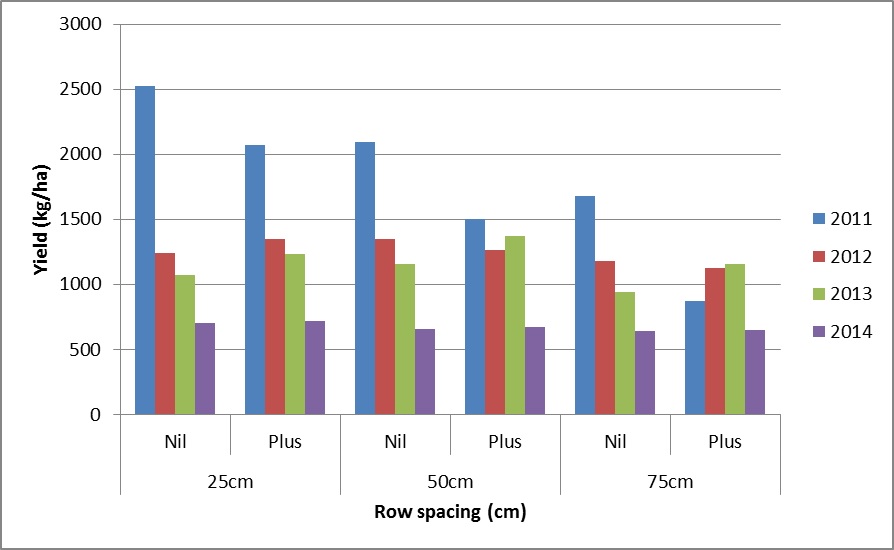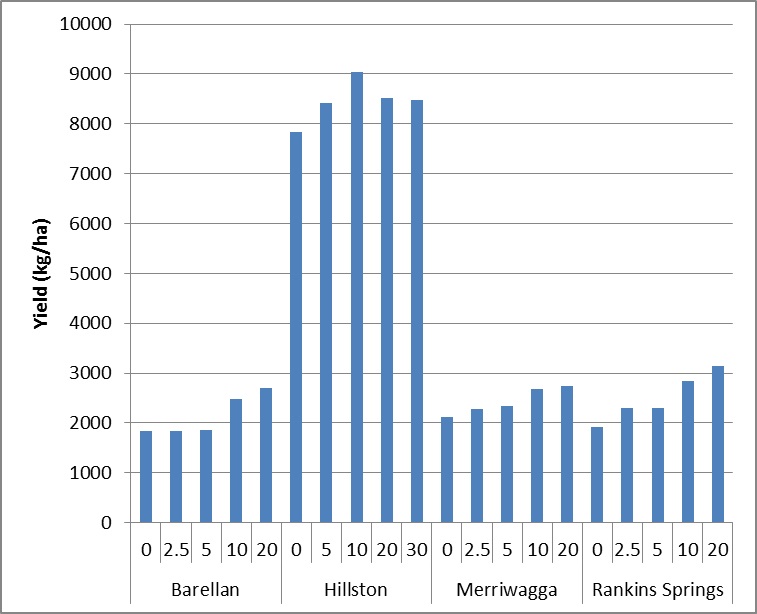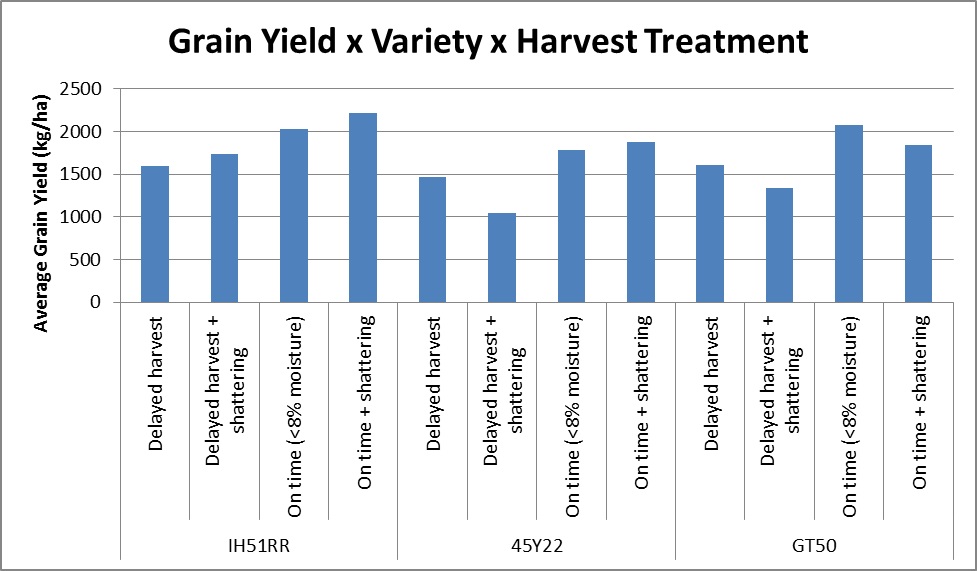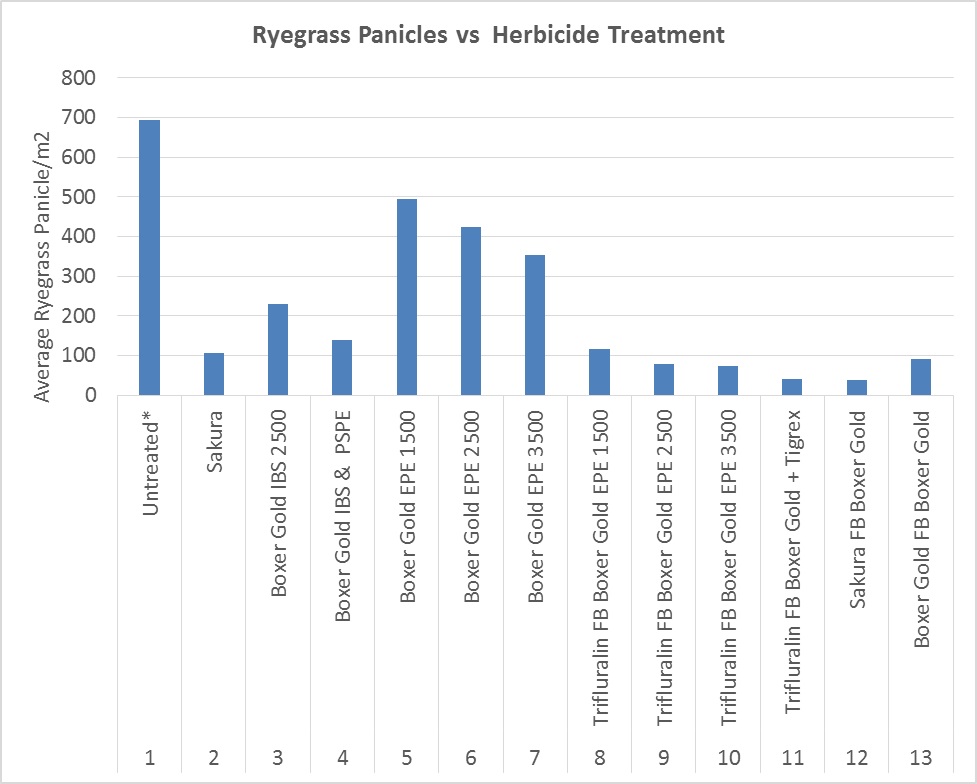Local research highlights
Author: Barry Haskins (Ag Grow Agronomy and Research) | Date: 17 Feb 2015
ɸExtra technical comment by Protech Consulting Pty Ltd
Take home messages
- This presentation is aimed at showcasing brief outcomes from interesting local trials held in the western Riverina region of NSW. Further details are on the Ag Grow website.
- The Variety Specific Agronomy Package (VSAP) lupin trial at Merriwagga highlighted yet again the questionable need for starter fertiliser in both albus and angustifolius lupins.
- The VSAP wheat trial at Merriwagga highlighted the benefit of sowing early (even in the presence of stem frost), the nitrogen response differences between early and later sown crops, and the benefit of pre drilling versus topdressing nitrogen in dry finishes.
- Ag Grow P trials highlighted the necessity of at least 10kg of P even in high P paddocks on acid soils when yields are above 2t/ha.
- The Bayer pod shatter reduction technology trial highlighted the exciting benefit of this technology in canola varieties in the presence of pod shattering events.
- The Syngenta Boxer® Gold early post emergent (EPE) trial highlighted the next level of pre emergent herbicide strategies, where Boxer® Gold used at various rates EPE gave close to 100% ryegrass control including those within the seed furrow.
Background
Ag Grow Agronomy and Research undertakes a range of independent research project in SW NSW tailored at answering client and industry research questions. Some of these projects are co funded with other organisations, and others solely funded by our business with support from agronomy clients.
Some of the outcomes from this research are beneficial to the wider grains industry, and as such are presented in brief below. Further details on each trial may be found on our website listed at the end of this paper.
VSAP Lupin x row spacing x fertiliser trials

Figure 1. Lupin row space x fertiliser trials at Merriwagga since 2011. Note plus fert = 60kg Granulock 15 with seed at sowing.
In 2011 adding fertiliser decreased yield by an average of 621 kg/ha, however there was no difference in 2012 and 2014, and in 2013 fertiliser increased yield by 198 kg/ha. In all cases it was hard to economically justify adding 60kg Granulock 15.
Albus and angustifolius varieties (six) have reacted similarly in these experiments with regards to response to fertiliser. Consequently, these trial indicate adding starter fertiliser to lupins in our environment is hard to justify. The only advantage is a slight increase in lowest pod height in some seasons.
VSAP wheat variety x sowing time x nitrogen response Merriwagga
Delaying sowing from 1st May to 29th May reduced yield by 30%, even in the presence of a mild stem frost.
It was more profitable to apply urea to an early sown crop than a later sown crop, and topdressing gave little or no benefit to yield especially in the later sown treatments.
Table 1. Grain yield and return on investment from urea in a trial at Merriwagga 2014.
|
Nitrogen treatment |
Grain yield kg/ha |
Cost of nitrogen (urea @ $550/t |
Cost of application ($/ha) |
Grain yield benefit |
Profit $/ha |
Return on investment |
||||
|---|---|---|---|---|---|---|---|---|---|---|
|
TOS 1 |
TOS 2 |
TOS 1 |
TOS 2 |
TOS 1 |
TOS 2 |
TOS 1 |
TOS 2 |
|||
|
0+0 |
1861 |
1640 |
0 |
0 |
0 |
0 |
0 |
0 |
0 |
0 |
|
20+0 |
2278 |
1917 |
24 |
7 |
417 |
277 |
$67.00 |
$34.10 |
216% |
110% |
|
40+0 |
2592 |
1999 |
48 |
7 |
731 |
359 |
$116.79 |
$29.37 |
212% |
53% |
|
40+40 |
2770 |
1973 |
96 |
14 |
909 |
333 |
$103.62 |
-$31.75 |
94% |
-29% |
|
80+0 |
2854 |
2112 |
96 |
7 |
993 |
472 |
$130.36 |
$7.92 |
127% |
8% |
|
160+0 |
2698 |
1912 |
192 |
7 |
837 |
272 |
-$2.31 |
-$135.08 |
-1% |
-68% |
|
|
|
|
|
|
|
|
|
|
|
|
|
|
|
|
|
|
777 |
343 |
$ 83 |
-$ 19 |
130% |
15% |
Note urea $550/t or $1.20/kg N, grain $235/t on farm ASW.
Ag Grow Agronomy P response trials
Ag Grow Agronomy and Research soil tests highlighted that soil P levels had increased by over 50% in the last 10 years questioning the value and required rate of upfront P fertiliser. Four trials were held across our network in 2014. All had varying but adequate levels of soil Colwell P (mg/kg).
Barellan = 78mg/kg, Hillston 28mg/kg, Merriwagga 23mg/kg, Rankins Springs 44mg/kg.

Figure 2. P response trials at various locations. Note Hillston was irrigated, and all trials had adequate nitrogen applied. Dryland 30kg N/ha upfront, irrigation 200kg N/ha split. Across site analyses were not performed, but all sites had individual analysis performed highlighting significant treatment differences.
Bayer pod shatter reduction (PSR) trial at Barellan
Pod shatter reduction is a trait introduced into GM canola by natural plant breeding. It can aid in reducing losses due to shattering after maturity in canola, and after seeing the recent trial results we are excited about its place in the system.
We compared two non trait varieties to a variety with the PSR trait and imposed various treatments and measured the resulting yield.
The treatments were harvested on time or three weeks late, both including a simulated shattering event, where a poly pipe was shaken at waist height in every second row for 10 seconds.

Figure 3. Results from the Bayer PSR trial, Barellan 2014. IH51RR is the variety that holds the PSR trait.
Syngenta Boxer® Gold trial evaluation Barellan
For many years pre emergent herbicides have had the downside of weeds emerging within the seed furrow. Ag Grow and Syngenta designed a trial to evaluate various options to minimise this, which included utilising Boxer® Gold as an early post emergent (EPE) herbicide. Note this use pattern is not yet registered in NSW (nor any other state), but registration is expected prior to sowing in 2015.
This site had extremely high ryegrass numbers concentrated in the harvest windrow due to an unsuccessful narrow windrow burn during wet conditions amongst some other issues.
Results were very positive, but highlighted a few lessons for when this becomes a registered use:
- Only apply Boxer Gold EPE before any ryegrass reaches 1-2 leaf, and early in the crop life. Application after this will result in the ryegrass growing away from the herbicide. The herbicide also needs rain after application to activate.
- This use pattern is best used in conjunction with a pre emergent incorporated by sowing (IBS) herbicide such as Trifluralin or Sakura.
- Applying Boxer® Gold EPE offered excellent in furrow weed control even at 1.5L/ha, and offers flexibility to patch paddocks where higher ryegrass numbers are expected such as outside laps.
- Where ryegrass did survive, the seeds/panicle were dramatically reduced compared to other treatments if Boxer® Gold had been applied EPE.
- Crop effects from herbicides were measured across all treatments, but in this trial were minimal when using Boxer® Gold EPE. Using Boxer® Gold post sowing pre emergent (PSPE) is off label and also caused significant crop damage in this trial.

Figure 4. Boxer® Gold EPE trial at Barellan 2014. Note the higher than desired surviving panicles were heavily concentrated to the windrow, and are an unfair representation of the results that occurred outside of the windrow. (ɸ Treatment 11, Tigrex is not registered for control of annual grass)
Contact details
Barry Haskins
barry@aggrowagronomy.com.au
www.aggrowagronomy.com.au
@agrobaz
Was this page helpful?
YOUR FEEDBACK
